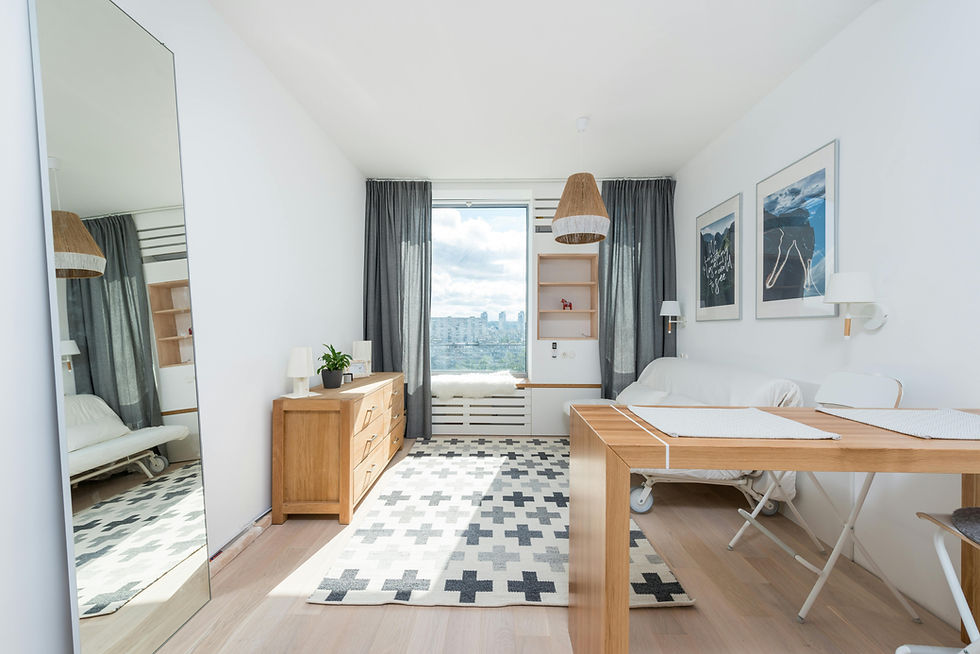Home Organization Tips for Adults with Down Syndrome
- Mykyta Rudnyk

- Jul 3
- 3 min read
For adults with Down Syndrome, an organized home means freedom. When the environment is calm and well-structured, daily tasks become more manageable and confidence grows. Small adjustments can make a big difference in supporting independent living.

Organizing Zones at Home for Adults with Down Syndrome
Breaking a home into zones makes organizing feel doable. Instead of tackling an entire bedroom, focus on a specific area: a reading nook, a clothing drawer, or a shelf with personal keepsakes. Zones help establish purpose and reduce overwhelm.
Use photos or labels to visually identify each zone. A picture of shoes on a basket or a label on a snack drawer reinforces structure.
Using Clear Storage Bins to Support Daily Routines
Transparent bins let items stay visible. This is key for people who are visual learners. But here’s the twist, don’t overload them. A bin packed with too many items is confusing. Group items by type and give each bin a job.
Stick to 3–5 related items per container. For example, a “craft bin” could hold scissors, glue, stickers, and markers, not the whole art supply collection.
Simplifying Closet Organization and Clothing Choices
Morning routines run smoother when there’s less decision fatigue. Consider a simple wardrobe layout with just what’s needed for the week.
Use a hanging organizer labeled by weekday. Each section holds one complete outfit: shirt, pants, socks, even accessories. That’s five less decisions to make every week!
Creating an Accessible Home Layout for Independence
Place commonly used items at waist height. Avoid the top shelf and bottom drawer when possible. This small shift boosts independence and reduces frustration.
In the kitchen, create a “safe cooking zone.” Keep utensils, microwave-safe bowls, and non-breakable dishes together in one accessible cabinet. Use color-coded cutting boards or measuring cups to make food prep more intuitive.
Visual Schedules and Routines for Adults with Down Syndrome
Habits thrive when they're supported by visual prompts. Think: a morning checklist posted by the mirror or a bedtime routine laminated near the nightstand.
Use dry-erase boards for flexible routines, and update them together. When someone feels part of the system, they’re more likely to use it.
Easy Cleaning Tips and Chore Systems for Adults with Disabilities
Turn chores into achievable steps. Vacuuming the whole house? Too much. But vacuuming just the living room rug? That’s a win. Break tasks into 5–10 minute chunks. Add music or set a timer to make it feel like a game.
Create a personalized cleaning kit, just a few familiar items in a small caddy. Add a favorite scent or label it with the person’s name to make it feel special.
Personalizing Organized Spaces for Comfort and Joy
Organizing isn’t just practical, it’s personal. Encourage self-expression through room décor, labels, or even the color of bins and baskets. A space that reflects someone’s taste is a space they’ll want to maintain.
Reviewing and Adjusting Your Home Organization Plan
Needs change. What worked six months ago may need tweaking. Involve your loved one in the review. What’s working? What feels frustrating?
Even a small change, like moving a shelf or switching drawer contents, can reignite motivation and improve flow.
Need Help Creating a Supportive and Organized Home?
Creating a supportive home environment doesn’t have to feel overwhelming. When the space is designed with care and intention, it fosters autonomy, clarity, and pride. These tips are just a starting point, tailor them to suit individual abilities and goals.
At Organize by Flo, we specialize in home organization for families in Vancouver and surrounding areas. Whether you’re seeking a full-space reset or gentle guidance to get started, we’re here to help.
Let’s create a space that supports the life you want to live.
Contact us today for a personalized consultation and discover how your home can work for you.




Comments